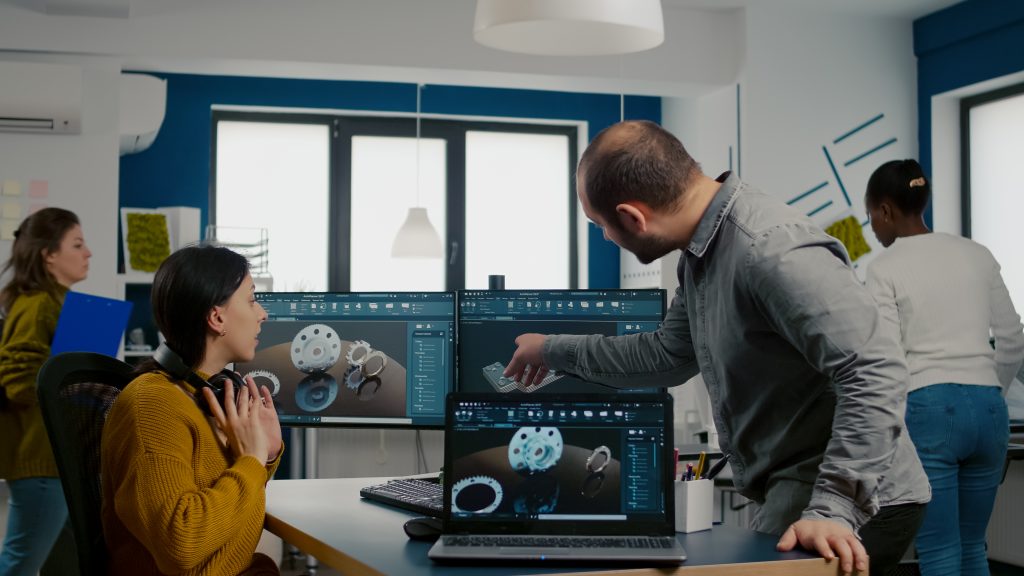Are you curious about how 3D printing actually works? Well, you’re in luck! In this article, we’ll take you through the entire process, from digital design to physical object. We’ll explain the slicing process and give you a step-by-step breakdown of how a 3D printer brings your model to life. But it’s not all sunshine and rainbows – we’ll also explore the limitations of this technology, including speed, quality, and post-processing requirements. So buckle up and get ready for an informative journey into the world of 3D printing!
3D Printing: From Digital Design to Physical Object
To create a physical object using 3D printing, you start by uploading a digital design. This design serves as the blueprint for the 3D printer to add layers of material and bring your creation to life. Material selection plays a crucial role in 3D printing, as different materials have unique properties that can affect the final result. From plastics like PLA and ABS to metals like titanium and ceramics, the possibilities are vast.
Optimizing 3D printing for large scale objects is an ongoing challenge. The size limitations of printers and the need for structural integrity must be considered. However, advancements in technology continue to push these boundaries.
The impact of 3D printing on supply chains is another area worth exploring. With the ability to print objects on-demand, traditional manufacturing processes may be disrupted. This has implications for inventory management and logistics.
Enhancing the resolution and detail of 3D printed objects is an ongoing pursuit in the industry. Improvements in hardware and software enable finer details and smoother surfaces.
Integrating electronics into 3D printed designs is an exciting development. By embedding circuitry within printed objects, new possibilities arise for functional prototypes and customized products.
Understanding the Slicing Process in 3D Printing
Understand how the slicing process in 3D printing transforms your digital model into printable layers. Slicing is a crucial step in the 3D printing process that converts your digital model into a series of 2D layers, which are then printed one on top of the other to create a three-dimensional object. There are various slicing software options available, such as Slic3r, Repetier, and Simplify3D, which allow you to optimize and customize your slicing settings based on the specific requirements of your design.
Accurate slicing is essential for achieving high-quality prints. It ensures that each layer is sliced accurately and precisely, resulting in a seamless final product. However, sometimes issues may arise during the slicing process, such as gaps or overlaps between layers. Troubleshooting these issues involves adjusting parameters like layer height, print speed, and infill density to achieve optimal results.
Different materials require different slicing settings to achieve the desired outcome. For example, optimizing slicing settings for PLA filament might involve adjusting temperatures and cooling strategies to prevent warping or stringing. On the other hand, optimizing slicing settings for flexible materials like TPU may involve tweaking parameters related to extrusion speed and retraction distance.
When dealing with complex or intricate designs that have overhangs or fine details, special slicing techniques can be employed. These include adding supports structures to provide stability during printing or using adaptive layer heights to ensure smooth transitions between different sections of the model.
Understanding the intricacies of the slicing process and utilizing appropriate software options along with accurate troubleshooting techniques will help you optimize your 3D prints and achieve outstanding results across various materials and design complexities
Step-by-Step: How a 3D Printer Prints a 3D Model
Take a closer look at how a 3D printer brings your digital model to life by printing it layer by layer. The process starts with the selection of a suitable 3D printer. There are different types available, including filament-based printers that use materials like PLA or ABS plastics. Once you have chosen the right printer, you need to prepare your digital model for printing.
Before printing, it’s important to troubleshoot common issues in 3D printing. This includes checking for any design flaws or errors in the model. Additionally, material selection plays a crucial role in achieving desired results. Different materials have different properties and may require specific settings on the printer.
Once your model is ready, it needs to be sliced into layers using slicing software like Slic3r or Simplify3D. This process prepares the model for printing layer by layer. The sliced file is then sent to the 3D printer where an extruder head heats and extrudes filament onto a platform. The extruder moves along two axes to apply the heated filament, creating each layer of the object until it is fully printed.
Advancements in 3D printing technology have revolutionized traditional manufacturing processes. With 3D printing, complex designs can be created with ease and precision. It has opened up new possibilities for rapid prototyping and customization in various industries.
Exploring the Limitations of 3D Printing Technology
The limitations of 3D printing technology include the need to design complex or interlocking parts as separate files. This poses design challenges, as it requires additional time and effort to create multiple files for a single object. Material compatibility is another limitation, as not all materials can be effectively used in 3D printing. Some materials may not melt or solidify properly during the printing process, leading to printing errors and failed prints.
In addition, post-printing techniques are often required to achieve desired results. Support removal and sanding are common steps needed to improve the appearance and functionality of 3D printed objects. These extra steps add complexity and time to the overall process.
While 3D printing has revolutionized rapid prototyping and small-scale production, it is not well-suited for mass production or tight tolerances. The speed of desktop 3D printers is generally slow compared to traditional manufacturing methods. Furthermore, achieving tight tolerances may be challenging with desktop printers, which can limit their use in certain industrial applications.
Despite these limitations, 3D printing technology continues to advance and find new applications in various industries such as medicine, construction, and manufacturing. As research and development continue, we can expect further improvements in addressing these limitations and expanding the capabilities of 3D printing technology.
Speed, Quality, and Post-Processing in 3D Printing
Desktop 3D printers are generally slow but efficient for rapid prototyping, and post-processing steps like support removal and sanding are necessary to achieve a finished look. To achieve high-quality prints, it is important to optimize print settings and utilize post-printing techniques.
Advancements in 3D printing technology have allowed for improvements in speed and quality. Manufacturers have been able to increase the printing speed of desktop 3D printers while maintaining good print quality. However, there is still a trade-off between speed and quality. Printing at higher speeds may result in decreased print resolution or surface finish.
To optimize print settings, it is crucial to choose the appropriate layer height, infill density, and print speed based on the desired outcome. Lower layer heights can improve the overall detail of the printed object but may significantly increase printing time. Adjusting infill density can help balance strength with material usage.
Post-printing techniques play a vital role in achieving high-quality prints. Support removal is necessary for removing any temporary structures that hold up overhanging parts during printing. Sanding can be used to smooth out rough surfaces or eliminate visible layer lines. Painting or other finishing methods can further enhance the appearance of the printed object.



